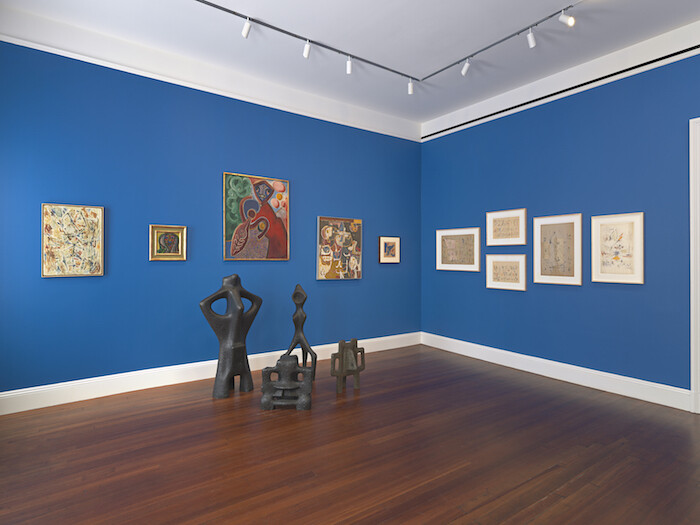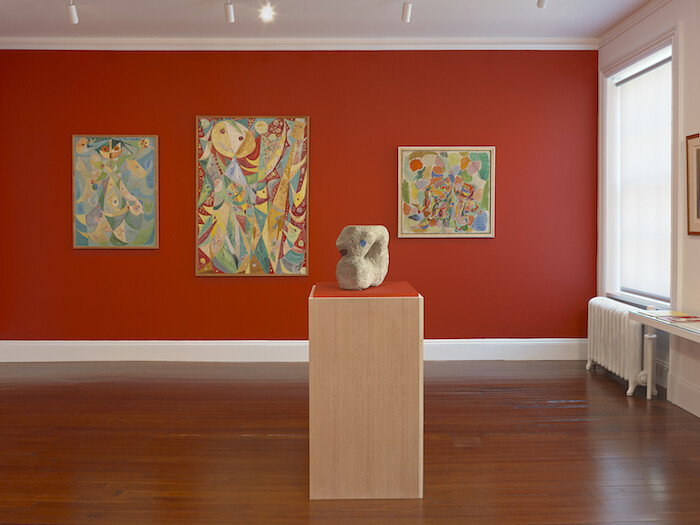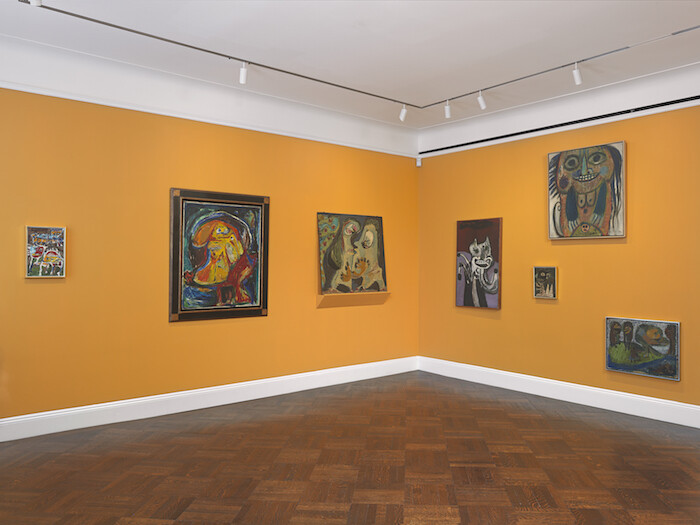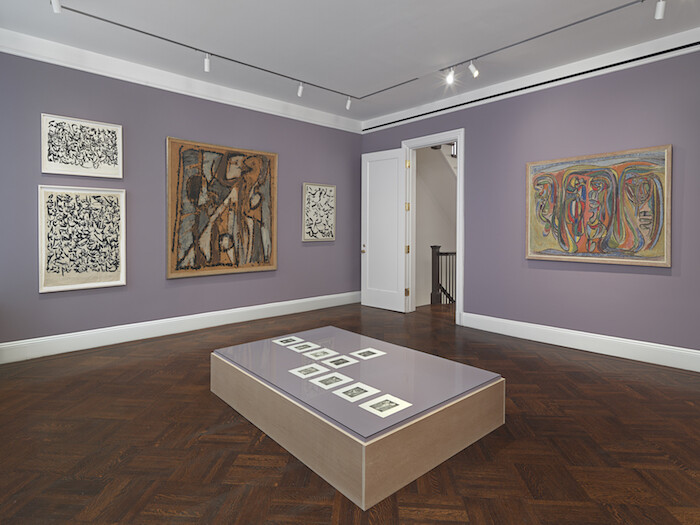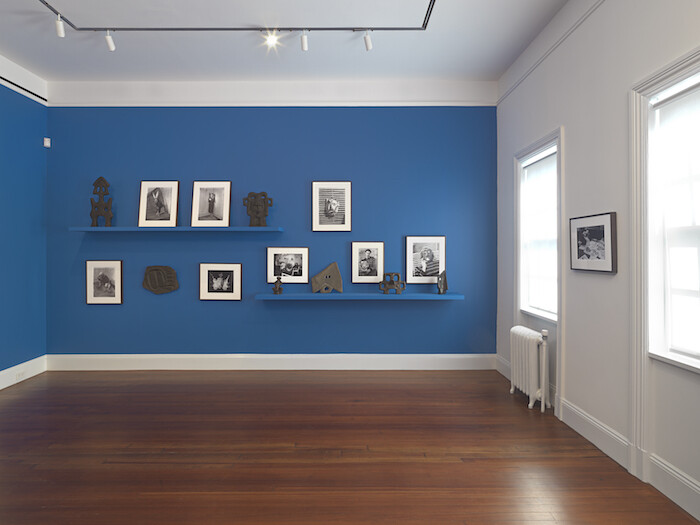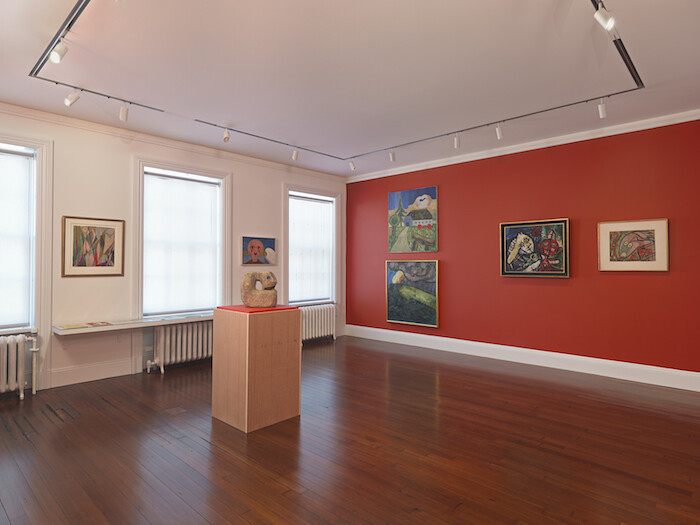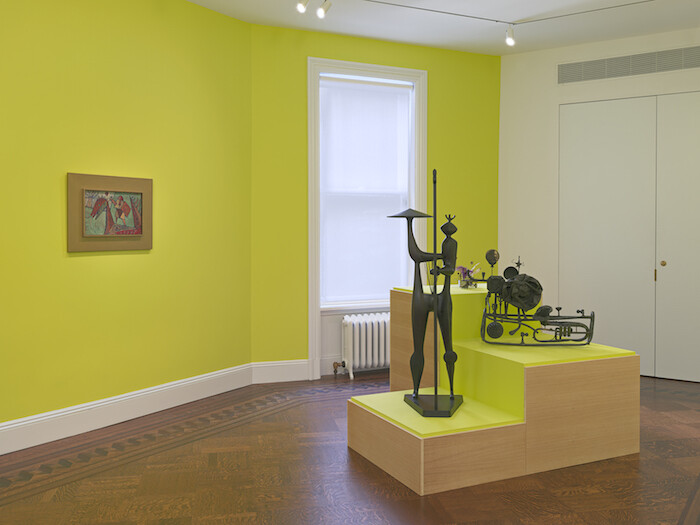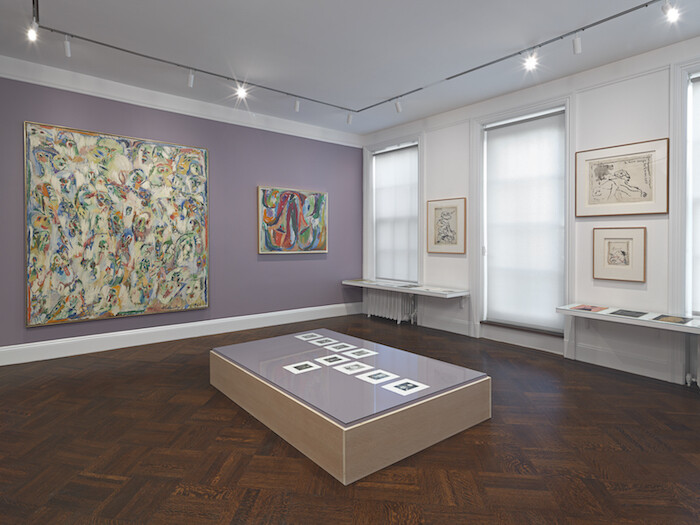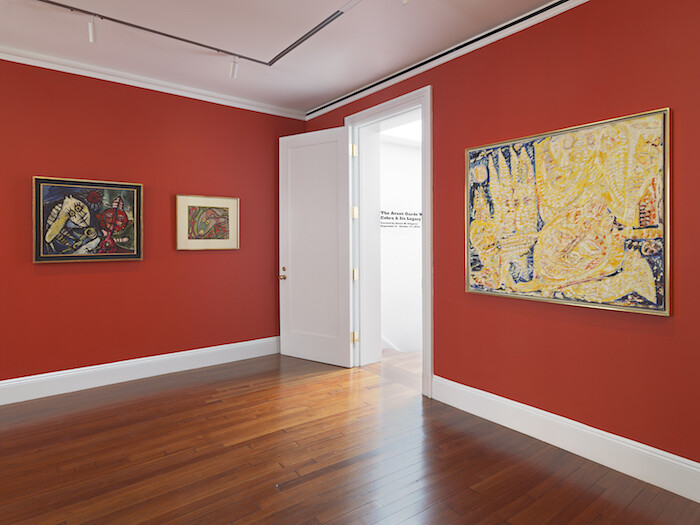Cobra, a short-lived association of artists based in Copenhagen, Brussels, and Amsterdam who published an eponymous journal from 1948 to 1951, has the dubious honor of being frequently invoked as a locus of postwar avant-garde activity in Europe, while its works remain all but invisible outside of the group’s native northern Europe. The two-part exhibition “The Avant-Garde Won’t Give Up: Cobra and Its Legacy,” split between Blum & Poe’s New York and Los Angeles locations, aims to be a corrective to this invisibility, as well as to the dominant understandings of Cobra as merely a Situationist precursor or, worse, a minor regional variant on Abstract Expressionist and Informel painting.
The first half of the exhibition, in New York, is a historical survey primarily comprising works from the 1940s and ’50s. It opens with Cobra member Asger Jorn’s painting L’avant-garde ne se rend pas, from which the exhibition takes its title. Part of his 1962 series “New Disfigurations,” found flea-market canvases overlain with childlike doodles and gestural marks, it is a vulgarized portrait of a young girl, redolent of Biedermeier kitsch, to which Jorn has added slightly menacing stick figures and, in a pastiche of Duchamp, a moustache. The titular slogan, scrawled nearly illegibly across the canvas, is insistently ambiguous, ostensibly proclaiming a sincere, ongoing commitment to the avant-garde project while simultaneously mocking its failure to upend much of anything. Its inclusion here is anachronistic, but fitting: within the tasteful confines of Blum & Poe’s Upper East Side townhouse, many of the works on display begin to look downright elegant.
The first room is devoted to the Danish collective Helhesten (Hell-Horse), founded by Jorn in 1941 during the Nazi occupation of Denmark. Helhesten continued those tendencies denounced as “degenerate”—primitivism, Expressionism, Surrealism—but also attempted to recuperate Nordic mythology and culture from Adolf Hitler’s volkish fantasies.1 Paintings like Egill Jacobsen’s Havet (1947) are all the more unsettling for their candy-colored palettes and decorative surfaces, while Henry Heerup’s misshapen landscapes take aim at a genre privileged in the Nazi canon for its blood-and-soil connotations.
Subsequent rooms pair the central Cobra figures: “Human Animals” is devoted to the bizarre creatures imagined by Jorn and Constant; “Peinture Mot” highlights the calligraphic paintings and works on paper by the Belgians Pierre Alechinsky and Christian Dotremont; and “Cobra Kindergarten” places the childlike figuration of Karel Appel alongside the work of Japanese-American artist Shinkichi Tajiri, who settled in Amsterdam in the mid-50s. A section uncritically devoted to “Primitivism and the Mask,” with a number of unremarkable “totemic” sculptures by Sonja Ferlov Mancoba, is a low point, despite the captivating performative photographs by Frits Lemaire of Eugène Brands posing in his grotesque, ephemeral masks.
The exhibition’s curator, Alison M. Gingeras, argues that the theoretical writings of Cobra members have been privileged at the expense of their artistic output. By contrast, the focus here is placed entirely on the objects: Situationism isn’t mentioned once in the exhibition materials, and the journal Cobra is represented through the display of its artist-designed covers. Focusing on form does convincingly upend several prevailing notions about the group, such as the influence of Abstract Expressionism (negligible). For all Cobra’s emphasis on anarchic, indecorous canvases populated by monstrous hybrids, these are far from haphazard scrawls. The exhibition’s best works exploit the dissonance between their naïve posturing and the artists’ skillful handling, cannibalizing the innovations of various other artists—the spontaneity of Surrealist automatism, the crude surfaces of Dubuffet’s hautes pâtes, the acidic coloration of Expressionism—and reworking them in unexpected ways.
But this exhibition feels like an overcorrection: situating Cobra as a movement of painters and sculptors independent of their theoretical and political work is no less partial and misleading than the narrative Gingeras wants to supplant. Aside from the press release, the exhibition contains no contextualizing information; there is nothing in the galleries that might suggest, for instance, that most Helhesten and Cobra members were communists who aspired towards the creation of a “red international,” defying both the bourgeois individualism of conventional art-making and the narrow strictures of Socialist Realism, nor their commitment to collective practices.
More cynically, redirecting attention away from Cobra’s politics and publications towards their production of discrete artworks in conventional media has an obvious appeal for a commercial gallery—particularly given that it represents the estate of Cobra painter Karel Appel. The exhibition suggests that these works are unrecognized masterpieces of the neo-avant-garde whose influence reaches directly into the present—the forthcoming Los Angeles show juxtaposes Cobra with contemporary artists—but considering the artworks in isolation reveals the extent to which they are animated by the theory: without it, we are left with fascinatingly weird objects, but little else.
Kerry Greaves, “Hell-Horse: Radical Art and Resistance in Nazi-Occupied Denmark,” Oxford Art Journal, vol. 37 no. 1 (March 2014): 47-63.
